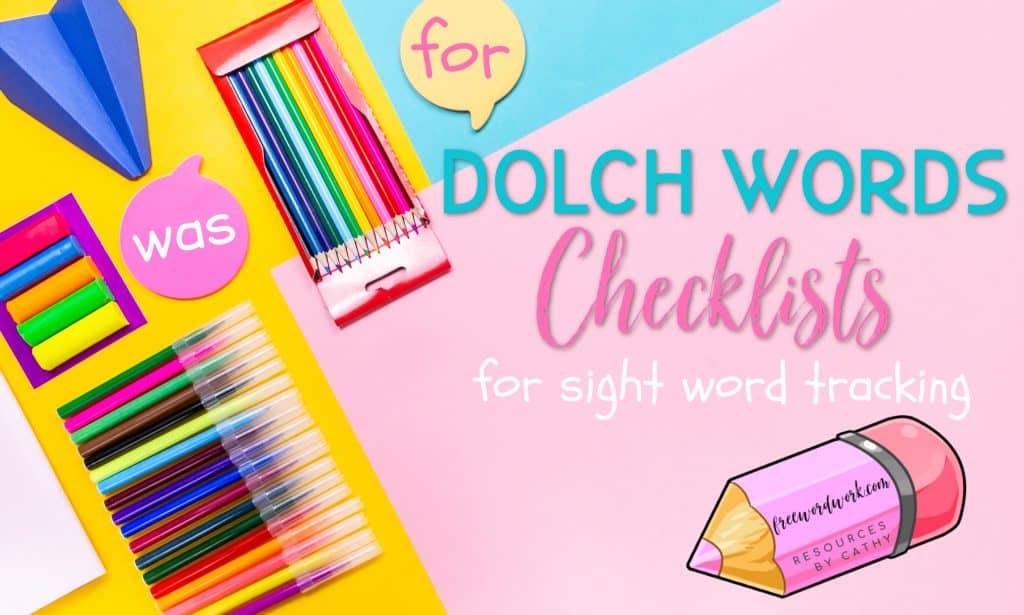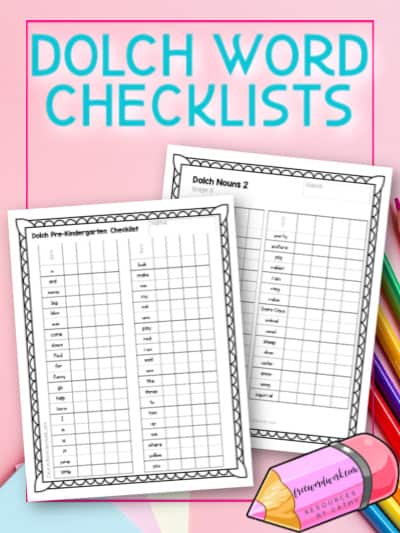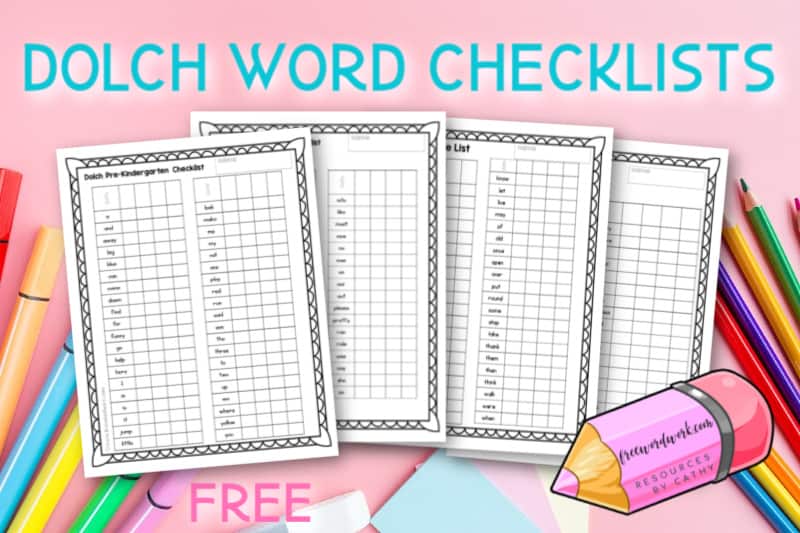Use these Dolch Word checklists to assess student sight word mastery in your classroom.

These Dolch Word checklists will make tracking sight word mastery easier in your classroom.
If you are new to sight word instruction in your classroom, begin by reading about What Sight Words Are & Why Sight Word Instruction is Important. You will also be able to learn about the difference between Fry Words and Dolch Words.
If you have decided on a Dolch Word focus for your sight word instruction, the checklists found below will help you in tracking growth.
How do I get started?
First, it is important to know the general breakdown for the Dolch sight words. Unlike Fry Words, these sight words are broken into groups by grade level:
| pre-kindergarten |
| kindergarten |
| 1st grade |
| 2nd grade |
| 3rd grade |
| Dolch nouns |
For most students, you would begin assessing children on the word list you would like them to master by the end of the year.
Many kindergarten teachers will not begin the year by checking sight word mastery. Instead, they might do a check on letter and number ID. It is possible you have a child who is already reading and you are curious how many words they know. You might decide to test just this child for your own documentation.
You do not want children to spend a great deal of time practicing words they already know. If you have a kindergarten student who has mastered the kindergarten list, you might choose to have that child work on the first grade list during their word work time.

Completing a Check
While it might be important that you are checking sight word mastery in order to gather data and then be able to document growth. You do not want a sight word check to become a point of frustration for any child.
Some teachers feel that is important to have a child attempt every word on the list you are checking. I always felt like this could really crush a child’s confidence.
If you are working with a second grader who can’t read the first words on the second grade word list, imagine how they are going to feel struggling through the entire list. Instead of pushing through the list, I will pull out the first grade word list. If a child is still struggling, I will continue moving down.
In cases when I was working with a second grader who couldn’t read any of the words on the pre-kindergarten list, you can try to take a moment to find a few words that the child can read. Maybe write the word red in a red marker or the child’s name. You never want to end an assessment with a child feeling like they are not capable.

The Dolch Word Checklists I created contain all of the Dolch Words.
At the beginning of the year I would sit with my kids and have them work through the appropriate list with me. I would place a check mark next to each word they knew. I liked a check mark for correct words instead of an x for incorrect words but that is up to you.
For my kids who mastering sight words was a focus, I would do quick checks every week to track growth.
These were not always formal checks – sometimes they would happen at the door as students entered the classroom or during lunch in the classroom. This doesn’t mean that I checked an entire list of words each week. If I knew that the week before a child had focused on a group of words, we would just go over that section. I realize that squeezing in this extra time can be a challenge!
You can download these Dolch Word Checklists here:
You might also be interested in the Dolch Word Lists & Checkboxes.

The page for the word lists and checkboxes doesn’t exist.